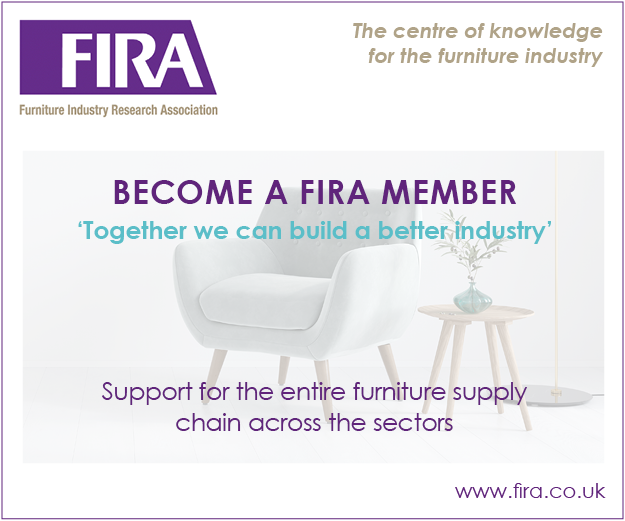Design underpins this industry, regardless of one’s place in the market. While creating something from nothing can appear to be the province of high-end European designers, the UK has a core of solid, hard-working creative professionals that keep the industry alive – in this exclusive Furniture News series, Rob Scarlett of Scarlett Design UK goes in search of the unsung heroes of the industry to find out what makes them tick. In this article, Rob meets Willis & Gambier’s Martin Rapko …
Willis & Gambier’s design manager is a long-term employee of the Peterborough-based supplier, having joined the company back in 2006. A specialist in the design and construction of furniture, Martin has developed many of the company’s best-selling collections, earning Willis & Gambier multiple industry awards over the years. Educated in Slovakia, today Martin finds time to work with design interns from Nottingham Trent and De Montfort universities.
On Martin
Where might I have heard your name before?
Unless you have had dealings with Willis & Gambier, I may be a completely unknown entity – I work in the main office and rarely venture outside!
Where did you study?
My studies are deeply tied to Slovakia where I grew up. At high school, I specialised in processing wood and joinery, specifically furniture restoration and wood carving. Unfortunately, this school has closed now – it was fantastic place to study, especially the workshop, which was in an old factory, which was still producing bentwood beech Thonet cafeteria-style chairs at the time. For my higher education, I studied interior design and furniture in the heart of Slovakia at the Technical University in Zvolen. I finished university in 2004 with a bachelor’s degree.
What was the most valuable part of your education?
There is a lot I learned during my early years, but to me the most important part was my knowledge in furniture construction and technical drawings, both of which seem to be overlooked in the UK educational system concerning furniture. Although I remember saying I would never do any more technical drawings in my life past high school, this education has helped me on a daily basis. I feel quite blessed with the education I’ve undertaken. All of my tutors were full of knowledge, and managed to pass most of it on to me, in one way or another.
What was your first design job?
I tried a couple of avenues to enter the design industry before I moved to the UK. One was a design studio where I did a couple of days as a trainee – which helped me to figure out that I prefer a hands-on approach, and that I would be better off in a workshop. Consequently, I tried a bespoke kitchen studio, where I started in a workshop and stayed there a couple of weeks before moving to the UK. I’m happy I tried both approaches – it helped me appreciate the value in each part of the business.
“I think as we go forth there will be a need for more variety and originality in design. The only serious issue is economic stability”
What are you working on right now?
At present I am balancing a number of projects with the help of our small team. The work we are doing at the moment is the fine-tuning and signing off of last year’s developments to specific projects undertaken for various multiple customers – and, of course, in-house development for next year. It’s all very exciting and dynamic – there is no time to spare, truth to be told.
On design
How do you mentally prepare yourself for work each day?
On a sunny day I ride a longboard to work, or go for an early morning run to clear my head and organise my thoughts for the day.
A blank sheet of paper can be daunting – what inspires you to fill it?
Daunting, yes, but only to a certain level – we all work with variables here, from customer briefs to timescales. I try to fully understand the extent of a task before I pick a direction. Research is key, and communication. I put music on and zone out – at least for little bit – before I freak out. Seriously, though, the music helps. The customer sets their own limits – I can get easily inspired from all around, given there is some space left to explore and play. Generally speaking, I would look at architecture, a little fashion, and then flick through interior magazines.
We sometimes compromise designs to make them commercial – how do you maintain your quality despite such pressures?
Touche, Rob! Commercialisation is a very individual thing – what is commercial for one customer may be too ‘out there’ for another. Again, I would try to understand the brief as best as possible. Based on that, I can play around with variables such as the material, finish and hardware, all of which are individual to a certain level but still part of the finished product. Also, factory skillsets and technical processes are important, as is trying to employ different points of view. Quality is key, and it may be hard to maintain, but we do have structures in place to check production at each stage.
Which area of your work do you enjoy the most – and the least?
I genuinely don’t believe there is a part I don’t enjoy – I may have a moan when there are lots of technical drawings to go through, but it’s part of the package. On the other hand, the enjoyment comes from the whole process, up until the point the cabinet arrives in the showroom and is signed off – after that, it’s pretty much out of my hands. Most of the students I work with enjoy the early stages of research and the first steps of the design – but I do like a bit of a challenge, and to look at what we can do with the cabinet in terms of construction or using materials responsibly.
Describe one of your favourite designs, and explain why it inspires you
I don’t dwell on specifics or single pieces, and do like variety, where there is more than a single idea to put into practice. This may be difficult at times, but I would probably say “where aesthetics meets function”. For example, old Victorian buildings and the way art is almost stitched into them, with practicality.
Which is your favourite designer retailer, and what are they doing right?
I visit Harrods once or twice a year, and I used to like Habitat. Actually, I worked at Habitat for a couple of months, maybe that’s why – it’s the early Conran values which were part of it. Harrods is good for a general check up on trends, they have a huge furniture showroom with every possible style one can think of. On occasion, I’ve used this as an entry point in my research, before taking a particular direction.
On today’s furniture market
Pick three words that sum up UK domestic furniture design today
Slowly getting better – from the terms being used to describe designs, to demand, and style itself. I think the customer has a better understanding of what they are looking for. I’m only worried that furniture becomes a fashion again – like just before the credit crunch. That was terrible – the lifespan of product ranges and styles was no more than a couple of months, and that is very dangerous territory for all involved.
“I’m only worried that furniture becomes a fashion again – like just before the credit crunch. The lifespan of product ranges and styles was no more than a couple of months, and that is very dangerous territory for all involved”
Do you feel that the industry adequately supports designers?
Yes and no. To start with, it is hardcore – it’s difficult to get a job, as nobody will spend time with school leavers. I do feel designers are often looked at like they’re a different species, and treated as such – a little credit now and then couldn’t hurt.
What’s the last design that really caught your eye?
I really liked the Diesel Living showcase at Milan’s furniture expo. The whole look, from flooring through to soft furnishings and lamp shades, was very well put together, and almost didn’t need to be labelled – a very strong statement of identity.
What’s the future of furniture design?
At the moment it’s difficult to say – on one hand there are multiple and larger companies sourcing off-the-shelf product, copies of copies. On the other there is a new-found demand for fresh design. I think as we go forth there will be a need for more variety and originality in design. The only serious issue is economic stability, which then drives the demand for furniture. If this is right, then we will see a growth in new names and new designs.
On the industry
Which industry event or platform gives a designer the best insight?
I would like to say the NEC, but that would be a lie. I do enjoy London Design Week, but it is only remotely relevant for me. New Designers is getting better, but depends on whether the tutor the student has is willing to co-operate. High Point in the US was an eye-opener for sure, and Milan. On the other hand there’s a couple of Far East shows that are worth having a wander around – I think the Singapore show was the one I liked most.
What design website do you visit most often?
There is no single source I would call on, but I really enjoy the simplicity of Pinterest. I introduce to this all my interns, and after that I find they’re not inclined to search through magazines – or, God forbid, open a book.
What’s the biggest challenge you face?
I think time – it seems there is never enough.
What advice would you give to young designers just starting out in the industry?
I don’t want to give any advice – just keep doing your best, that’s all you can do. When I have a bad day there is one thing I remember – “just keep swimming”, from Disney’s Finding Nemo �
Rob Scarlett says …
Martin makes a really interesting point when he says “I’m only worried that furniture becomes a fashion again”. I think he’s right to be worried. We are in a commercial industry, and allowing ourselves to be overly dictated to by ephemeral trends and fashion can be really harmful to a company.
Simon Pengelly’s Radius range has been selling for Habitat for at least as long as I’ve been in the industry. Why is that, you might ask? Unfortunately, the answer to that is something that everyone would love to know, but few people can. What it isn’t, is fashion led – or at least, it’s not dictated by a trend that will be here one moment and then gone the next.
Mid-market design doesn’t have to be boring, ‘me too’ and un-inspirational. Neither does it need to be entirely fashion led, here today, gone tomorrow. There is a middle ground where we’re inspired by higher-end markets but grounded by what real, everyday people want. Longevity is the key, and designers like Martin are an integral part of achieving that.
Scarlett Design was established in early 2010 by British designer Rob Scarlett, who began his career when he was named the 2003 Young Designer of the Year. Subsequently, Rob has played a key role in the design teams of some of the best-known brands and businesses in the UK furniture industry, including Willis and Gambier, Nathan Furniture, Mark Webster and Yinihome. He has also enjoyed success with ranges launched through UK retailers such as Heal’s, Marks & Spencer, Furniture Village and John Lewis. This article was published in the July issue of Furniture News magazine.









